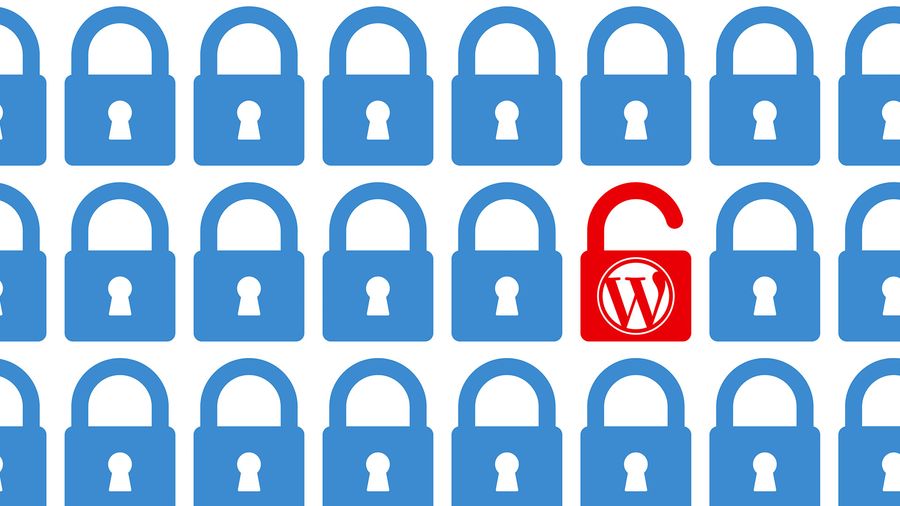· security · 4 min read
Best practices for securing your WordPress website against cyberattacks
As the most popular content management system in the world, WordPress has also become the most frequently attacked CMS for hackers.

According to recent security reports from Sucuri, 94.23% of all infected websites ran on WordPress, while 2.49% ran on Joomla and close behind, 1.28% ran on Drupal. This leads many to mistakenly believe that WordPress is an insecure platform compared to its competitors.
In truth, WordPress core is comparable, if not as secure, as competing platforms. As of April 6, 2021, since its initial release, Drupal has reported 333 common vulnerabilities and exposures, or CVEs. Joomla 382 and WordPress 342. Of the three platforms, WordPress Core sits in the middle of the pack.
Why is WordPress considered so vulnerable?
The appealing thing about WordPress is that it is easily extensible through a variety of plugins. These plugins are not routinely checked for vulnerabilities by the WordPress core team. Each WordPress plugin developer is more or less responsible for the quality and security of their published code. This, coupled with the fact that WordPress is the most popular CMS, means that it is constantly under attack from bots looking for known vulnerabilities.
The other most common cause of problems with WordPress is little to no maintenance of the platform, once a site is launched it too often falls into disrepair. All too often, WordPress is chosen by end users for its ease of use without any knowledge of how to properly maintain and secure a website over the long term.
WordPress can be deployed and used very securely if it is properly maintained. There are major website operators that have WordPress in use, including: Tagesschau, XING, SAP, Daimler, Reuters and Vogue. Which proves that a lot of large organizations trust this platform to publish and deliver their information securely. But they can only do this by following a set of development and maintenance principles, and when these are followed, the risk of successful external attacks is minimized.
How do I secure my WordPress website?
If you follow the steps below, you can keep a WordPress site as secure as any other competing CMS platform.
Prioritize development planning
All too often, developers solve requirements and issues directly with WordPress by taking the easy way out and choosing an off-the-shelf plugin for a quick fix. This leads to a bloated WordPress installation with many plugins with perhaps dubious sources that significantly diminishes the security of the site’s environment.
Use only trusted plugins to prevent your website from getting infected. Take a look at the plugin first and try it out before using it permanently. Also, read through reviews and comments about a plugin. Have security vulnerabilities perhaps been reported in the past with a plugin what you want to install? And have the security holes been closed quickly?
Updating WordPress as well as plugins
You may manage to solve a problem or implement a requirement, even without the use of a plugin, and thus do not get a third-party provider on board.
Since the most common cause of infections is due to an improperly maintained website, this problem can theoretically be easily avoided. By keeping both your WordPress installation and third-party WordPress plugins up to date. If you only use well-known and widely used plugins, the risk of a plugin going unmaintained is minimal.
However, if a plugin is no longer maintained, or even the whole project has been discontinued, remove it as soon as possible and replace the former functionality. Non-maintained plugins are a guarantee of a security breach in your own website.
WordPress security plugins and two-factor authentication
Several reputable plugin developers have released plugins, such as WordFence, which actively monitor your WordPress installation and even warn and protect against zero-day security vulnerabilities. Use one of these plugins to make your website more secure. The plugins monitor your website for file changes and known vulnerabilities, and also rely on a software-based firewall for common attacks.
Also, make sure your website uses two-factor authentication for all users who have permissions to edit your website’s content. This again minimizes the risk. For example, it prevents methods from being used to obtain credentials from an infected website.
Use Managed WordPress Hosting Provider
Managed WordPress hosts have become very popular lately as they make proper WP hosting and maintenance much easier. Using a managed WordPress hosting like Mittwald or Ionos can help you make your website consistently more secure by locking down the website’s system files for the renting client. To prevent infected websites from changing host-level behavior.
Managed hosts often offer regular backups, web application firewalls, DDOS protection and CDNs – great tools for improving performance and minimizing risk to a theoretically vulnerable website.
Conclusion
WordPress is both a powerful and secure platform on which to run any type of website. But only if you commit to best practices in software development and commit to long-term maintenance. An added advantage is that with the WordPress platform, you get the most intuitive, easy-to-use backend interface, as well as powerful SEO support, plus good customizability.